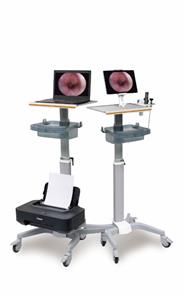Endoscope development history
1. Rigid endoscopy stage (1806--1932): The rigid endoscopy stage was pioneered by German Philipp Bozzini. It consists of a vase-shaped light source, candles and a series of lenses, and is mainly used for bladder and urethral examination. The rigid endoscope developed by Rosenhein in 1895 consists of three tubes arranged in concentric circles. In 1911, Elsner made improvements to the Rosenhein gastroscope, but the inability to observe after the lens was dirty became a major defect. Despite this, the Elsner gastroscope was still in command before 1932.
2. Semi-flexible endoscopy stage (1932—1957): Schindler cooperated with the outstanding instrument operator Georg Wolf to develop gastroscopes in 1928, and finally succeeded in 1932, named Wolf-Schinder gastroscopes. After that, many people modified it to make it more functional and practical.
3. Optical fiber endoscopy stage (1957 to present): In 1954, British Hopkins and Kapany invented optical fiber technology. In 1957, Hirschowitz and his assistants demonstrated a self-developed optical fiber endoscope at the American Society of Gastroscopy. In the 1960s, Olympas of Japan used external cold light sources to greatly increase the brightness and further expand the field of vision. With the continuous improvement of accessory devices in the past 10 years, fiber endoscopes can be used not only for diagnosis, but also for surgical treatment.




